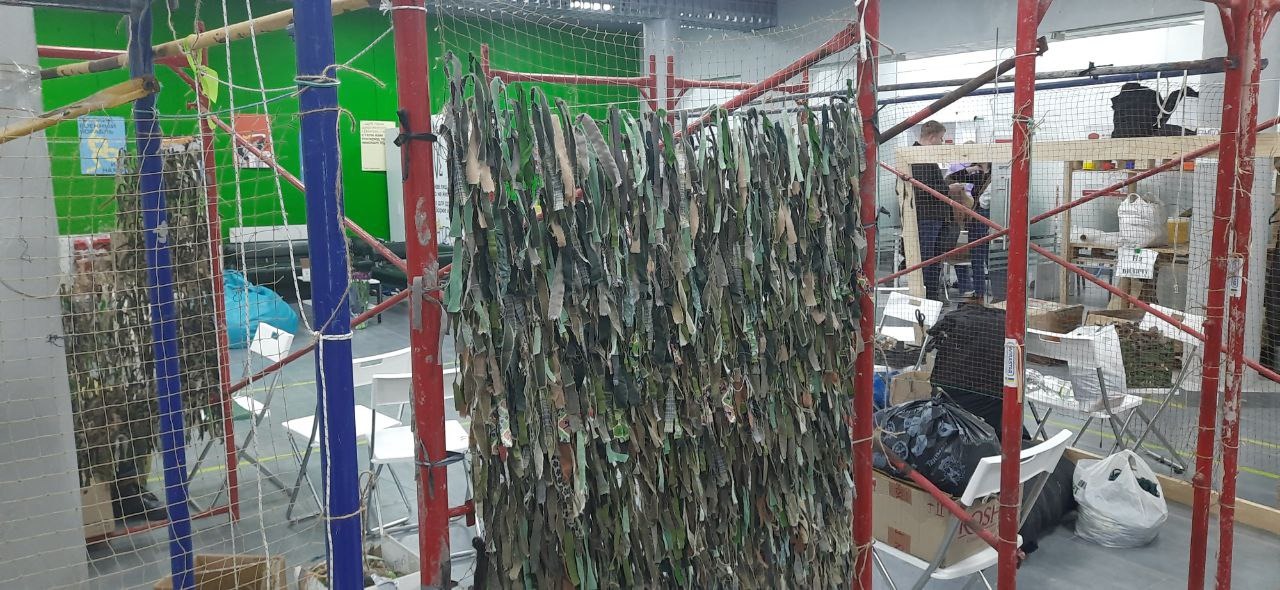 Dispatches
DispatchesLaw students and young lawyers in Ukraine are filing for JURIST on developments and issues arising as the country defends itself against Russian invasion. Here, JURIST Ukraine Chief Correspondent Anna Tymoshenko, a law student at Kyiv-Mohyla Academy, talks about work that volunteers in Poltava, including herself, have been doing to provide camouflage netting for Ukrainian troops in the field.
During the war, the volunteer movement in Ukraine has gained tremendous traction; we are as strong at the rear as we are on the front lines. It’s difficult to put into words how much pride fills one’s heart as a result of our nation’s unity and the bravery of everyone involved.
Here I’d like to lift the lid on one of the types of assistance we’ve offered in Poltava to increase the security of our soldiers in hotspots. We weave camouflage nets to shield the military from enemy eyes. They are primarily used to protect checkpoints, trenches, ammunition, and equipment.
Essentially, pieces of fabric are placed on the net to make the color blend in with the surroundings. In practice, they are made from improvised materials. As an example, we use nets from football gates, fishing nets and so on as a base, and then we cut fabric from old clothes donated by locals to cover the net. With the arrival of spring, demand for individual camouflage products has increased, so the majority of our resources are now focused on developing camouflage suits (mostly for scouts and snipers), which are colloquially known as “kikimory” (which can be translated into English as “frights” or “water witches”).
The military literally “orders” nets and suits based on their requirements: color and materials vary depending on the activity and location. We had to quickly adapt to weather conditions in February and March: snow requires white, dirt after rain – brown and black. Green shades are now popular for hiding in the woods, but a yellow-sand suit is required for the dry steppe or sandy terrain. Furthermore, because costumes are made to fit different heights and sizes, they are truly unique.
Orders are coming in from all over the country. However, first our region’s fighters were provided with our nets, and then they were sent to others. Currently, most products are sent to Kherson and Mykolayiv.
The volunteer center is open every day, without breaks or rest days, and people come when they can – before or after work, and on weekends. Some people have the opportunity to work on camouflage nets all the time.
If there are enough hands, making one camouflage net and one camouflage suit takes about one day. As a result, providing enough products for all of the soldiers is a difficult task.
The majority of volunteers here are women, but men are also coordinators and helpers. It is difficult to determine the proportions by age because everyone is involved, from schoolchildren to retirees, with varying motivations. Young people are enthralled by the spirit of patriotism and the desire to contribute, whereas older generations use such work to distract themselves from the bad news and constant bad experiences that Ukrainians, particularly their relatives, face.
It’s also worth noting that our volunteer headquarters used to be the office of one of Ukraine’s political parties, but nothing from the party’s activities or political ideology remains in it since the beginning of the war. Even this party’s fiercest opponents come here, because the idea and unity are now more important than the political vicissitudes of peacetime.
Refugees from Kharkiv, Sumy, and other affected areas have also arrived to assist. Once, Kharkiv musicians decided to add some joy to the atmosphere by organizing a small concert right among the nets.
Seeing this juxtaposition of art and war, life and death is both heartbreaking and moving. However, the sense of belonging to a such an amazing nation prevents anyone from giving up.

